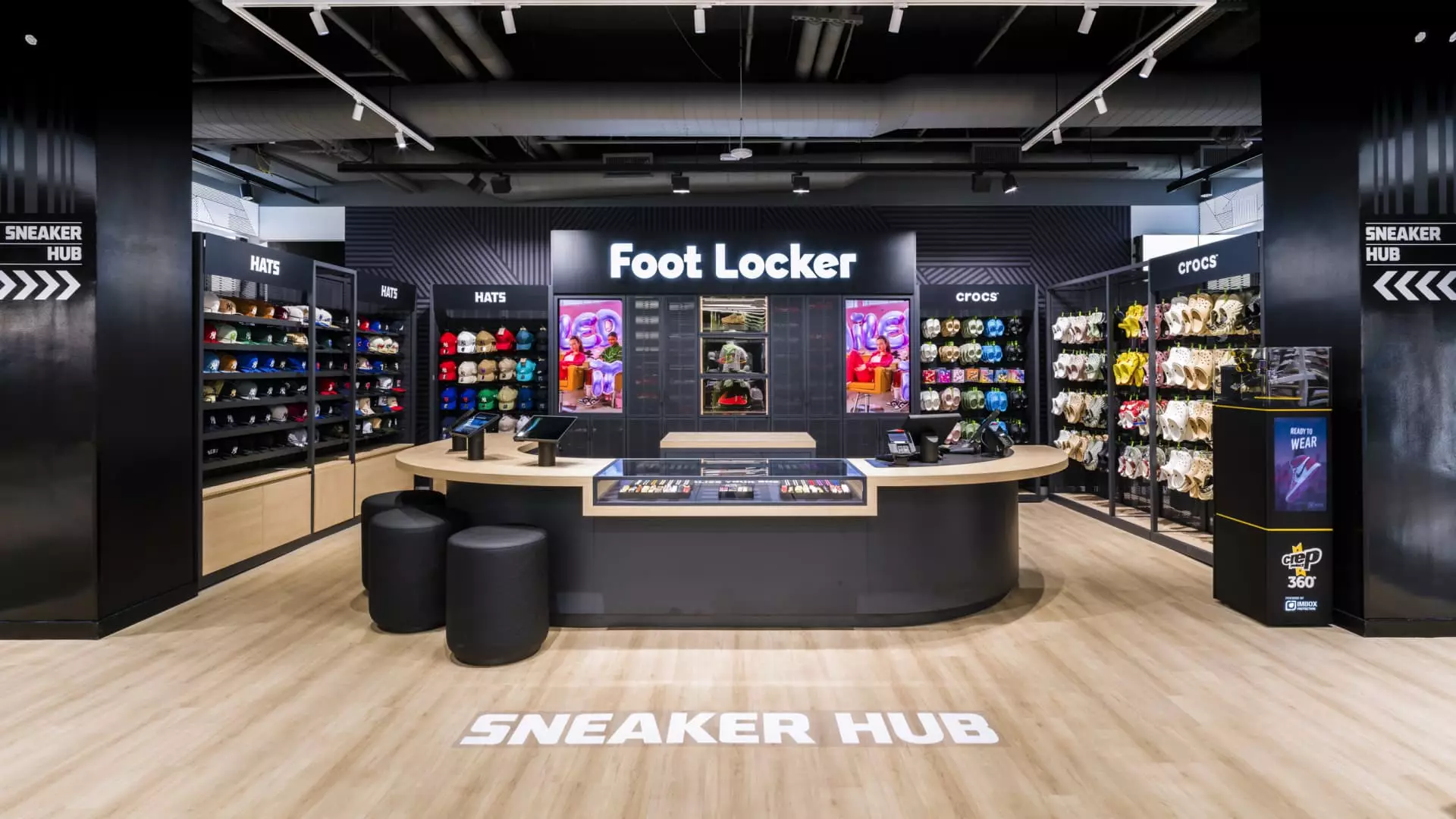Foot Locker’s outlook for the upcoming fiscal year is far from optimistic. The company has acknowledged the reality of a shoe market inundated with deep discounts, driven largely by its main partner, Nike. While Foot Locker briefly reported impressive gains in profit margins, the reality is more complex. The anticipated dip in earnings per share between $1.35 to $1.65 starkly contrasts Wall Street’s lofty estimate of $1.77, emphasizing a concerning trend. A deeper dive reveals that the retail landscape is under duress, where promotions are no longer a temporary strategy but rather a standard operating procedure that hints at severe inventory mismanagement.
The company’s revenue dropped to $2.25 billion, starkly falling short of the $2.32 billion projections. This decline, exacerbated by previous year comparisons that were skewed due to an extra week of holiday shopping, signals a troubling trend. Even as Foot Locker emerged from a substantial loss the previous year—reporting a net income of $49 million as opposed to a staggering $389 million loss—it’s clear the progress is merely a blip in an otherwise dire trajectory.
Nike’s Influence: A Double-Edged Sword
Navigating the complexities of its partnership with Nike is undoubtedly a critical challenge for Foot Locker. With Nike accounting for nearly 60% of its sales, the sneaker giant’s ongoing strategic reset creates unnerving pressures on Foot Locker’s profit margins. Nike’s reliance on steep discounts to shift stagnant inventory not only threatens Foot Locker’s revenue but also its customer base, as shoppers flock directly to Nike’s own channels for better deals. For example, a popular Air Force 1 model enjoys significant markdowns on Nike’s website, while Foot Locker clings to full pricing, effectively pushing consumers away.
Furthermore, CEO Mary Dillon has made it clear that in an environment rife with heavy promotions, the “Lace Up Plan” aims to come into its own as a beacon of hope. Yet, this campaign seems more reactive than proactive. The dependence on Nike, which struggles with its own growth and emphasis on full-price sales, raises questions about whether Foot Locker can successfully diversify its offerings or innovate to attract customers back to its stores.
Diversification Efforts: Are They Enough?
Foot Locker has indeed taken steps to broaden its brand portfolio, incorporating newer names like On Running and Hoka while maintaining a connection with established brands like Ugg. While this approach may diversify its channels, the essence of the problem remains unaddressed: Foot Locker’s long-standing dependency on Nike. The ongoing struggles with inventory management reveal a fracture within Foot Locker’s operational structure that cannot be simply papered over with fashionable new brands.
The company’s plans to invest $270 million in renovating its store fleet also raises eyebrows. While refreshing locations and expanding outside of malls is reasonable, the reality remains that the market is shifting towards e-commerce at an unprecedented rate. Foot Locker’s decision to scale back its physical presence by closing 4% of its stores hints at a desperate grasp for existence in a rapidly evolving retail landscape.
Global Market Challenges: A Heavy Toll
The loss of nearly 14.1% in Foot Locker’s sales across the Asia-Pacific region over the last quarter underscores the severe challenges it faces on a global scale. This isn’t merely a localized problem; it’s a reflection of a broader trend that’s hitting the retail industry worldwide. Closure strategies in regions like South Korea and Denmark are not just cost-saving measures, but a surrender to a challenging market that suggests Foot Locker is prioritizing survival over growth.
Given the onslaught of challenges such as economic uncertainty, evolving consumer preferences, and intensified competition from direct-to-consumer brands, Foot Locker’s future remains uncertain. The decision to operate with a third party in Greece and Romania does little to inspire confidence in its international strategy.
A Future in Limbo
As Foot Locker stumbles ahead, the overarching sentiment is one of hesitance rather than progress. Attempts to revitalize the brand through innovative plans, operational diversification, and physical store renovations are commendable yet feel pale against the backdrop of Nike’s ongoing struggles and promotional pressures. The consumer landscape is shifting, and unless Foot Locker can ride that wave with adaptability and foresight, it risks becoming a footnote in the sneaker industry’s ever-competitive narrative.
The data points to a looming crisis within Foot Locker’s business model; it’s no longer just about weathering storms but about forecasting new paths in an environment characterized by turbulence and fierce competition. In an industry where consumer loyalty is as volatile as the stock market, Foot Locker’s ability to adapt will be the linchpin to its survival or decline.

